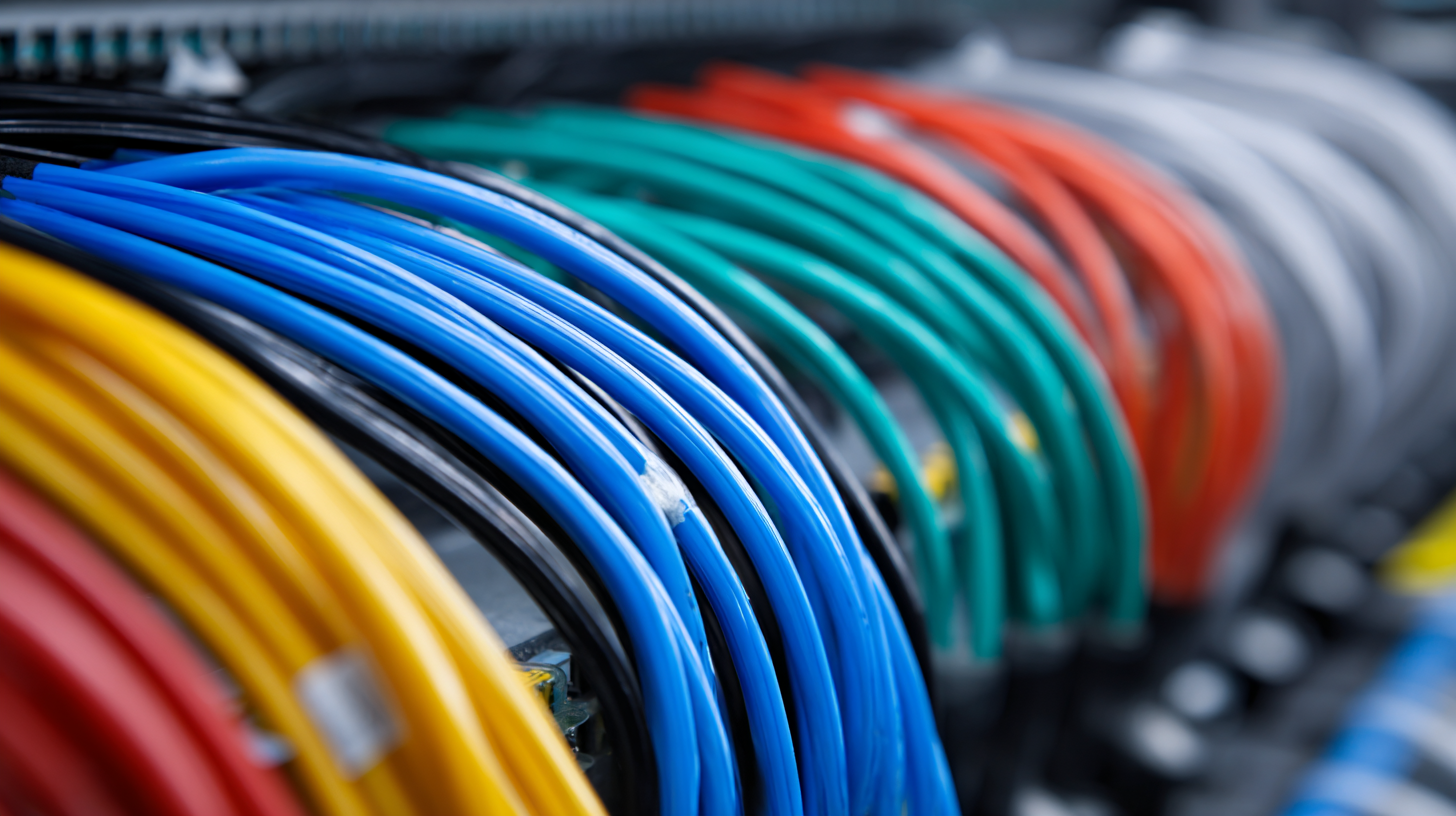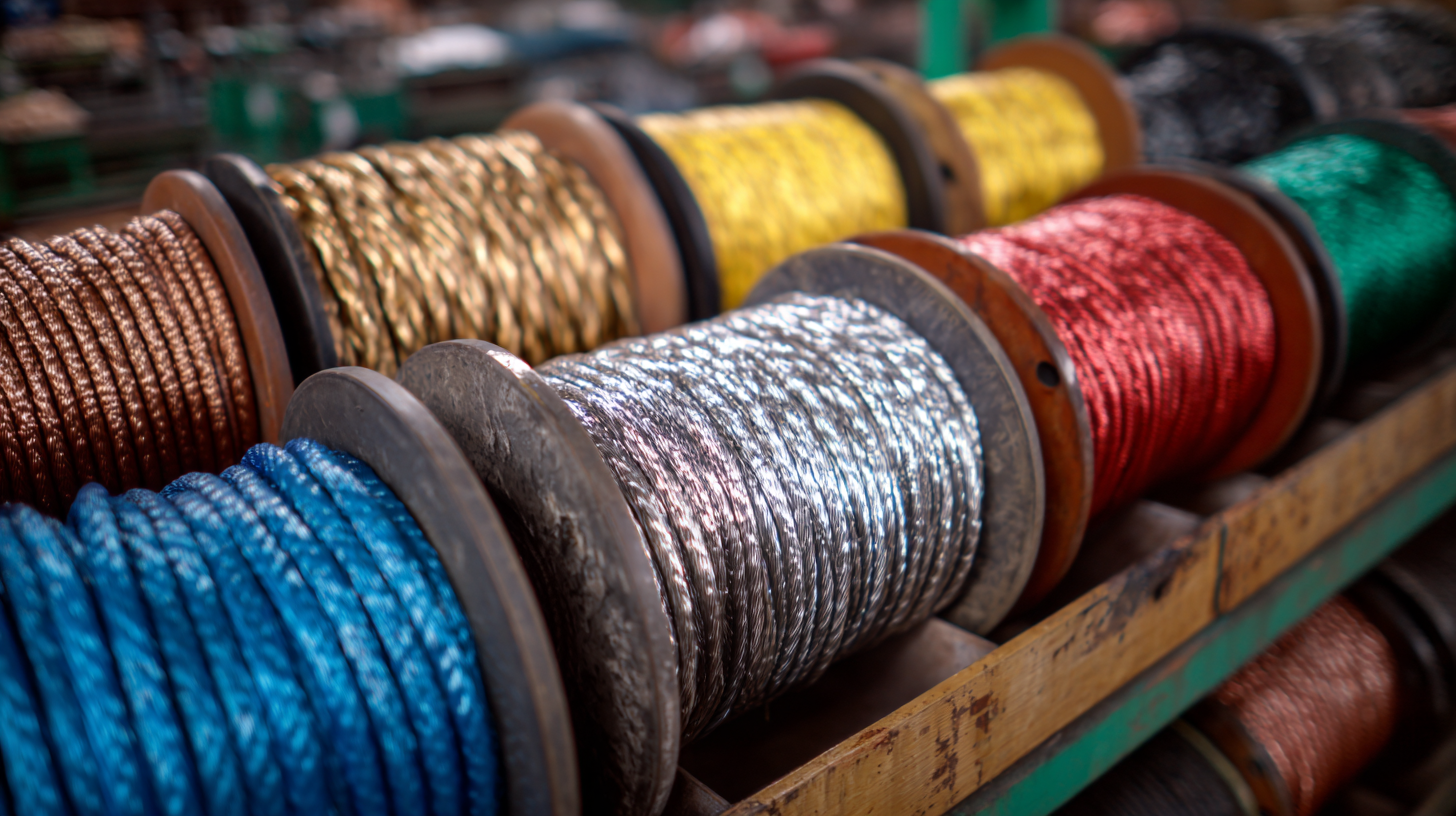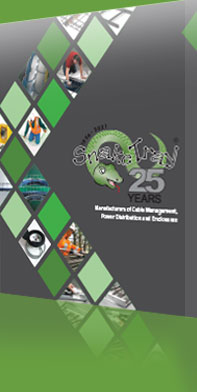Harnessing the Best Tray Cable from China to Lead Global Manufacturing Innovation
In the rapidly evolving landscape of global manufacturing, the demand for high-quality tray cables has surged, positioning them as a critical component in various industries, including construction, automotive, and renewable energy. According to a recent market analysis by Research and Markets, the global tray cable market is expected to reach USD 1.2 billion by 2025, growing at a CAGR of 5.4% from 2020 to 2025. China's robust manufacturing capabilities and technological advancements have established it as a leading supplier of tray cables, driving innovation and efficiency in production processes. By leveraging superior materials and precise engineering, Chinese manufacturers are not only meeting the increasing demands of international markets but are also setting new benchmarks in safety and performance. This blog explores how harnessing the best tray cable from China can catalyze global manufacturing innovation and position businesses at the forefront of industry advancements.

Identifying Key Features of High-Quality Tray Cables from China
When it comes to global manufacturing innovation, the quality of tray cables plays a pivotal role in ensuring efficiency and safety in various industries. High-quality tray cables from China are known for their exceptional performance, durability, and flexibility, making them a preferred choice for manufacturers worldwide. Key features that set these cables apart include their robust material composition, which often features high-grade copper conductors and flame-retardant, weather-resistant insulation. This combination ensures optimal conductivity and protects against environmental wear, thereby enhancing the longevity of electrical systems.
Another crucial aspect of high-quality tray cables is their compliance with international standards. Chinese manufacturers are increasingly adopting stringent quality control measures and certifications, such as UL and IEC compliance, to meet global demands. Furthermore, these cables often incorporate innovative designs that facilitate easy installation and maintenance, which can significantly reduce operational downtime. By focusing on these critical features, industries can harness the power of top-notch tray cables from China, driving forward the agenda of manufacturing innovation with reliable and efficient electrical solutions.
Harnessing the Best Tray Cable from China to Lead Global Manufacturing Innovation
| Feature | Description | Importance | Quality Indicator |
|---|---|---|---|
| Material Quality | Uses high-grade copper and insulated materials | Ensures conductivity and durability | Low resistance and long lifespan |
| Heat Resistance | Designed to withstand high temperatures | Prevents overheating and potential fire hazards | High melting point and thermal cycling tests |
| Flexibility | Easily bendable for various installations | Facilitates easier handling and placement | Adheres to bending radius specifications |
| Fire Resistance | Made with non-flammable materials | Increases safety in case of fire | Passed fire tests such as UL standards |
| Water Resistance | Protected against moisture and corrosion | Enhances longevity in damp environments | IP ratings for water and dust ingress |
| Certification | Complies with international standards | Assures reliability and safety in usage | ISO, CE, or other applicable certificates |
| Cost Efficiency | Offers competitive pricing for high quality | Reduces overall project costs | Comparable pricing with enhanced performance |
Understanding the Manufacturing Process of Tray Cables
When it comes to manufacturing tray cables, understanding the intricate processes involved can significantly enhance the quality and efficiency of production. Tray cables are designed for various applications, particularly in industrial settings, and the manufacturing process typically starts with selecting the right materials. High-quality insulation and conductors are crucial, as they determine the cable's durability and performance.
Tip: Pay attention to the specifications of raw materials, ensuring they meet international standards. Choosing reputable suppliers for these materials can further guarantee compliance and enhance the finished product's reliability.
Once the materials are procured, the next step involves precision in the assembly process. This stage requires specialized machinery to accurately twist, braid, and shield the cables. Manufacturers need to implement strict quality control measures throughout this phase to eliminate defects and ensure consistency in the final product.
Tip: Incorporating automated systems in the assembly process can reduce human error and improve overall production efficiency. Regular maintenance of machinery is also essential to prevent breakdowns and maintain a smooth workflow.
Evaluating Supplier Credentials and Certifications for Tray Cables
With the surge of technological advancements in manufacturing, the demand for high-quality tray cables has simultaneously risen. Evaluating supplier credentials and certifications is paramount to ensure safety and reliability in this critical component of industrial operations. According to a report by Research and Markets, the global tray cable market is projected to reach USD 7.89 billion by 2027, growing at a CAGR of 7.2% from 2020. This growth underscores the importance of not only choosing the right products but also the right suppliers.

When assessing tray cable manufacturers, key certifications such as ISO 9001, UL, and RoHS compliance should be closely examined. These certifications signify adherence to quality management systems, safety standards, and environmental considerations, respectively. A study conducted by the National Electrical Manufacturers Association reveals that companies meeting these criteria are more likely to deliver products that comply with industry regulations and are less prone to failures, thereby ensuring smoother operations. Choosing suppliers with proven credentials can significantly impact manufacturing efficiency and innovation, enabling businesses to remain competitive in a global market.
Exploring Innovations in Tray Cable Technology for Global Markets
The advancements in tray cable technology are pivotal for driving innovation in global manufacturing sectors. Recent reports indicate a significant surge in demand for copper cables, fueled by the maturation of generative AI technology and the ongoing expansion of data center infrastructures. As industries increasingly rely on efficient power distribution and advanced connectivity solutions, the tray cable market is expected to experience robust growth. For instance, the global sustainable wire and cable market is projected to grow significantly, reflecting a broader trend towards eco-friendly and efficient materials.

In the automotive sector, the control cable market is also on the rise, projected to reach approximately USD 7.78 billion by 2034, up from USD 5.40 billion in 2024, with a compound annual growth rate (CAGR) of around 5.6%. This rising trend underscores the critical role that innovations in tray cable technology play across various industries, particularly in enhancing sustainability in manufacturing processes. As manufacturers worldwide explore these advancements, the focus on integrating cutting-edge materials and smarter cable management systems becomes increasingly essential for maintaining competitive edges in the evolving market landscape.
Assessing Compliance Standards for Tray Cables in Different Regions
In the era of globalization, understanding compliance standards for tray cables across different regions is essential for manufacturers looking to innovate and leverage global markets. Tray cables are critical for various applications, from industrial environments to commercial settings, and their standards vary significantly across countries. In the United States, the National Electrical Code (NEC) governs the standards, emphasizing safety and performance. Meanwhile, European regulations enforce the Use of the Low Voltage Directive (LVD), which sets parameters for electrical equipment safety. Recognizing these differences is vital for compliance and market entry.
When sourcing tray cables from manufacturers in China, it's important to ensure they meet specific regional standards. Here are a couple of tips:
1. **Research Local Regulations**: Before making a purchase, familiarize yourself with the specific compliance requirements of your target market. This ensures the products you source are legally compliant and can avoid costly delays.
2. **Request Certification Documents**: Always ask for certification proof from manufacturers, such as UL, CE, or RoHS compliance. This not only guarantees product quality but also builds trust with your client base, reinforcing your commitment to safety and innovation.
By prioritizing these steps, manufacturers can harness the advantages of high-quality tray cables from China while ensuring they adhere to necessary compliance standards in their operational regions.
